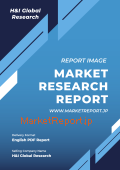Chapter 1. Executive Summary
1.1. Market Snapshot
1.2. Global & Segmental Market Estimates & Forecasts, 2020-2030 (USD Billion)
1.2.1. Automotive Plastic Compounding Market, by Region, 2020-2030 (USD Billion)
1.2.2. Automotive Plastic Compounding Market, by Product, 2020-2030 (USD Billion)
1.2.3. Automotive Plastic Compounding Market, by Application, 2020-2030 (USD Billion)
1.3. Key Trends
1.4. Estimation Methodology
1.5. Research Assumption
Chapter 2. Global Automotive Plastic Compounding Market Definition and Scope
2.1. Objective of the Study
2.2. Market Definition & Scope
2.2.1. Industry Evolution
2.2.2. Scope of the Study
2.3. Years Considered for the Study
2.4. Currency Conversion Rates
Chapter 3. Global Automotive Plastic Compounding Market Dynamics
3.1. Automotive Plastic Compounding Market Impact Analysis (2020-2030)
3.1.1. Market Drivers
3.1.1.1. Increasing focus on lightweight automobiles to lower carbon emissions
3.1.1.2. Surging demand for electric vehicles
3.1.2. Market Challenges
3.1.2.1. Various environmental regulations associated with the plastic recycling
3.1.2.2. High cost of the raw materials
3.1.3. Market Opportunities
3.1.3.1. Growing demand for interior and exterior aesthetics
3.1.3.2. Advancements in plastic compounding technologies
Chapter 4. Global Automotive Plastic Compounding Market Industry Analysis
4.1. Porter’s 5 Force Model
4.1.1. Bargaining Power of Suppliers
4.1.2. Bargaining Power of Buyers
4.1.3. Threat of New Entrants
4.1.4. Threat of Substitutes
4.1.5. Competitive Rivalry
4.2. Porter’s 5 Force Impact Analysis
4.3. PEST Analysis
4.3.1. Political
4.3.2. Economical
4.3.3. Social
4.3.4. Technological
4.3.5. Environmental
4.3.6. Legal
4.4. Top investment opportunity
4.5. Top winning strategies
4.6. COVID-19 Impact Analysis
4.7. Disruptive Trends
4.8. Industry Expert Perspective
4.9. Analyst Recommendation & Conclusion
Chapter 5. Global Automotive Plastic Compounding Market, by Product
5.1. Market Snapshot
5.2. Global Automotive Plastic Compounding Market by Product, Performance – Potential Analysis
5.3. Global Automotive Plastic Compounding Market Estimates & Forecasts by Product 2020-2030 (USD Billion)
5.4. Automotive Plastic Compounding Market, Sub Segment Analysis
5.4.1. Acrylonitrile Butadiene Styrene (ABS)
5.4.2. Polypropylene (PP)
5.4.3. Polyurethane (PU)
5.4.4. Polyvinyl Chloride (PVC)
5.4.5. Polyethylene (PE)
Chapter 6. Global Automotive Plastic Compounding Market, by Application
6.1. Market Snapshot
6.2. Global Automotive Plastic Compounding Market by Application, Performance – Potential Analysis
6.3. Global Automotive Plastic Compounding Market Estimates & Forecasts by Application 2020-2030 (USD Billion)
6.4. Automotive Plastic Compounding Market, Sub Segment Analysis
6.4.1. Instrument Panels
6.4.2. Powertrain
6.4.3. Door Systems
6.4.4. Interior Components
6.4.5. Others
Chapter 7. Global Automotive Plastic Compounding Market, Regional Analysis
7.1. Top Leading Countries
7.2. Top Emerging Countries
7.3. Automotive Plastic Compounding Market, Regional Market Snapshot
7.4. North America Automotive Plastic Compounding Market
7.4.1. U.S. Automotive Plastic Compounding Market
7.4.1.1. Product breakdown estimates & forecasts, 2020-2030
7.4.1.2. Application breakdown estimates & forecasts, 2020-2030
7.4.2. Canada Automotive Plastic Compounding Market
7.5. Europe Automotive Plastic Compounding Market Snapshot
7.5.1. U.K. Automotive Plastic Compounding Market
7.5.2. Germany Automotive Plastic Compounding Market
7.5.3. France Automotive Plastic Compounding Market
7.5.4. Spain Automotive Plastic Compounding Market
7.5.5. Italy Automotive Plastic Compounding Market
7.5.6. Rest of Europe Automotive Plastic Compounding Market
7.6. Asia-Pacific Automotive Plastic Compounding Market Snapshot
7.6.1. China Automotive Plastic Compounding Market
7.6.2. India Automotive Plastic Compounding Market
7.6.3. Japan Automotive Plastic Compounding Market
7.6.4. Australia Automotive Plastic Compounding Market
7.6.5. South Korea Automotive Plastic Compounding Market
7.6.6. Rest of Asia Pacific Automotive Plastic Compounding Market
7.7. Latin America Automotive Plastic Compounding Market Snapshot
7.7.1. Brazil Automotive Plastic Compounding Market
7.7.2. Mexico Automotive Plastic Compounding Market
7.8. Middle East & Africa Automotive Plastic Compounding Market
7.8.1. Saudi Arabia Automotive Plastic Compounding Market
7.8.2. South Africa Automotive Plastic Compounding Market
7.8.3. Rest of Middle East & Africa Automotive Plastic Compounding Market
Chapter 8. Competitive Intelligence
8.1. Key Company SWOT Analysis
8.1.1. Company 1
8.1.2. Company 2
8.1.3. Company 3
8.2. Top Market Strategies
8.3. Company Profiles
8.3.1. BASF SE
8.3.1.1. Key Information
8.3.1.2. Overview
8.3.1.3. Financial (Subject to Data Availability)
8.3.1.4. Product Summary
8.3.1.5. Recent Developments
8.3.2. The Dow Chemical Company
8.3.3. LyondellBassell Industries
8.3.4. DuPont
8.3.5. RTP Company
8.3.6. S&E Specialty Polymers, LLC
8.3.7. Dyneon GmbH.
8.3.8. Asahi Kasei Plastics
8.3.9. Ferro Corporation
8.3.10. Washington Penn Plastics Company
Chapter 9. Research Process
9.1. Research Process
9.1.1. Data Mining
9.1.2. Analysis
9.1.3. Market Estimation
9.1.4. Validation
9.1.5. Publishing
9.2. Research Attributes
9.3. Research Assumption











